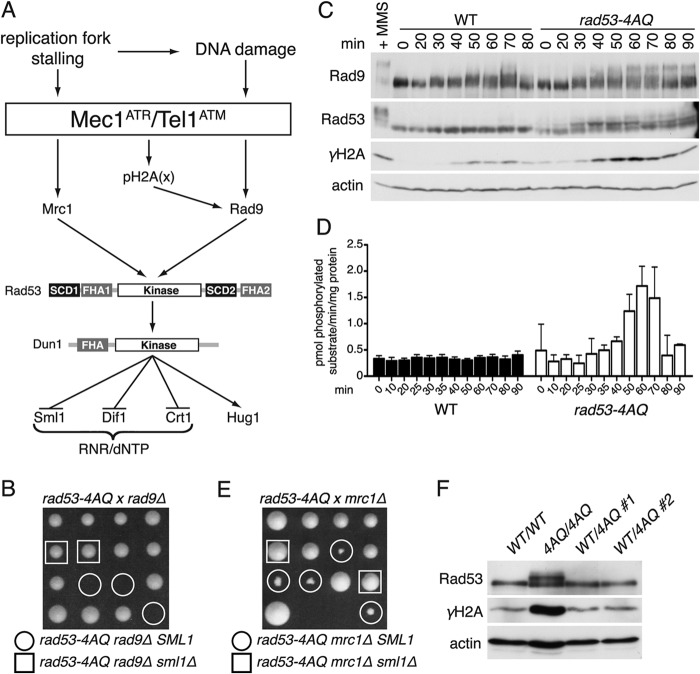Fig 1.
Impaired SCD1 phosphorylation leads to spontaneous checkpoint activation. (A) Schematic representation of yeast S phase checkpoint responses. (B) Tetrad dissection of a diploid strain heterozygous for rad53-4AQ, rad9Δ, and sml1Δ. Sibling spores are displayed in a column. Circles and squares denote indicated genotypes. (C) Western blot comparing Rad9, Rad53, and γH2A phosphorylation in WT and rad53-4AQ cells released into the cell cycle from α-factor-induced G1 arrest. The positive control is the WT treated with 0.05% MMS for 60 min. (D) Rad53 IP kinase activity in WT and rad53-4AQ cells at the indicated time points after α-factor release (mean ± SEM; n = 10 for the WT; n = 2 for the rad53-4AQ strain). (E) Tetrad dissection of a diploid strain heterozygous for rad53-4AQ, mrc1Δ, and sml1Δ, similar to panel B. (F) Western blot comparing Rad53 activation and H2A phosphorylation in asynchronous diploid strains of the indicated genotypes.

